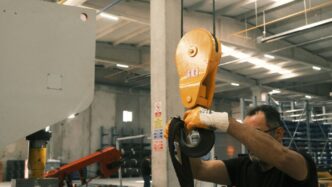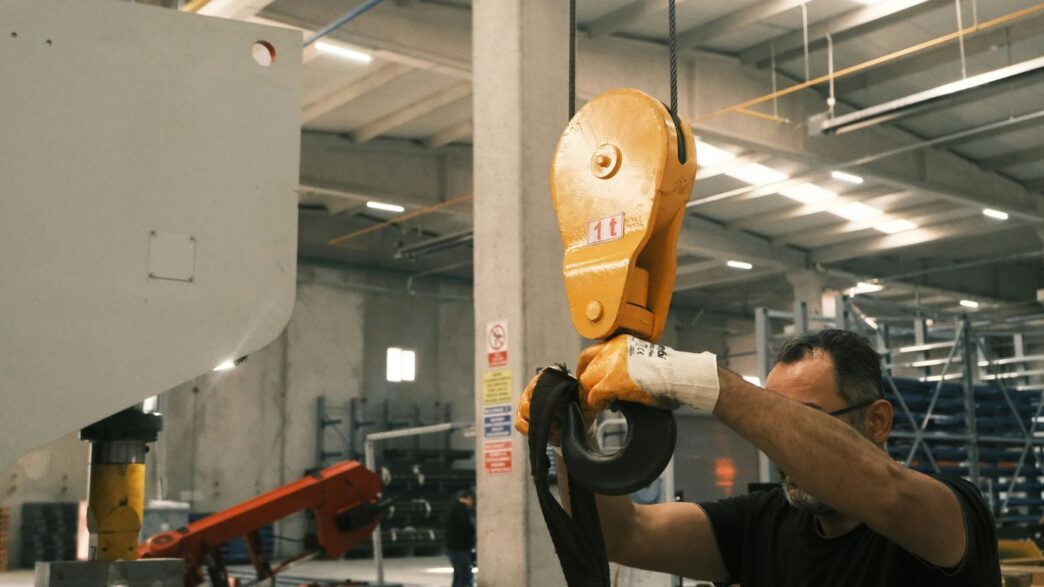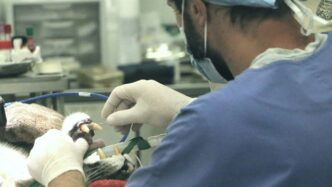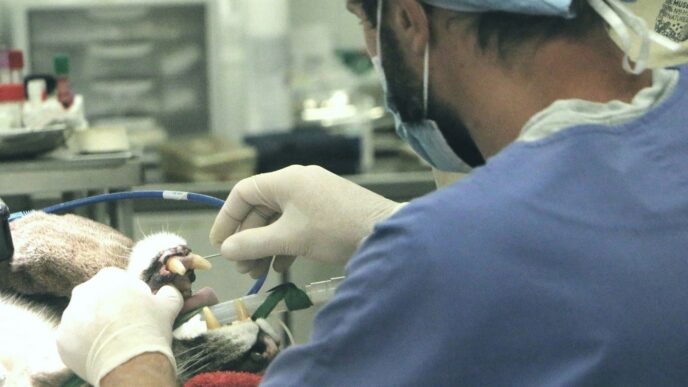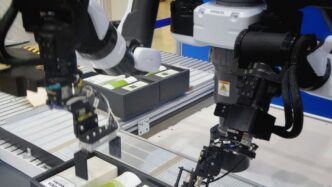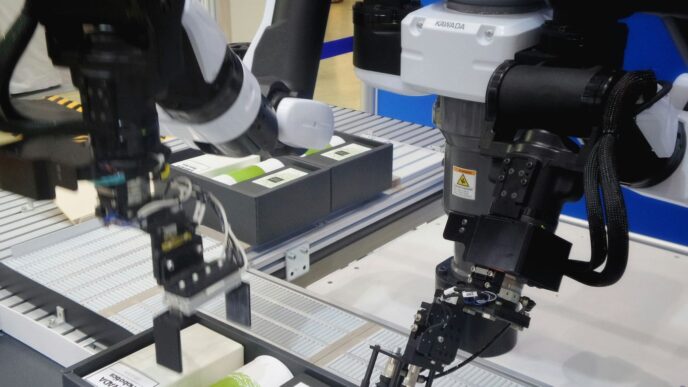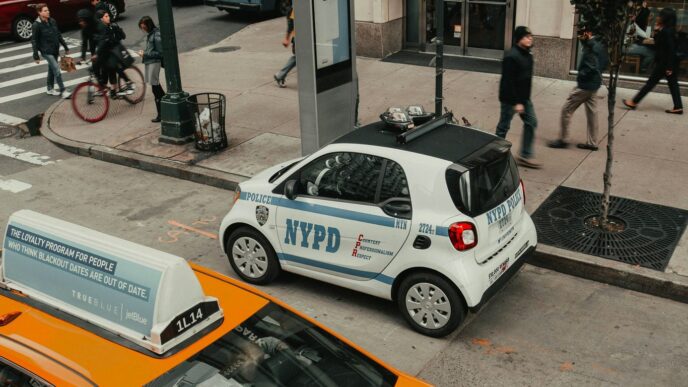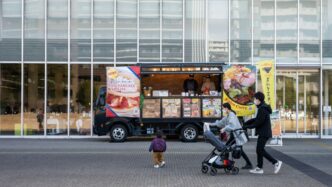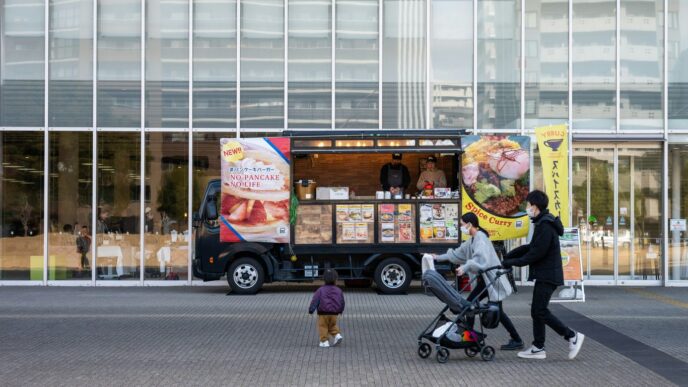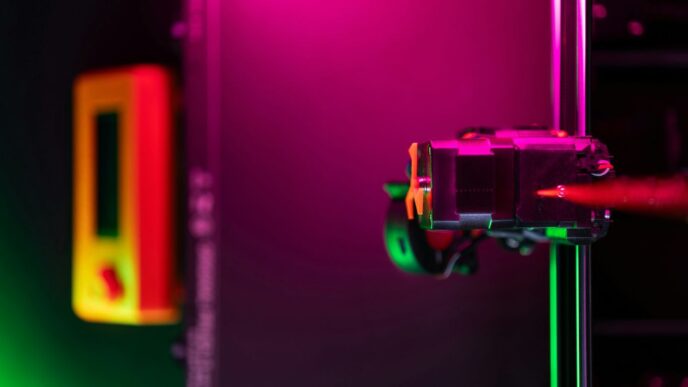Robots Enhancing Safety And Efficiency In Hazardous Environments
When we think about robots, we often picture them on assembly lines or maybe even helping out around the house. But some of the most important work robots are doing happens in places that are just too dangerous for people. These machines are stepping into the line of fire, quite literally, to keep us safe and get tough jobs done.
Firefighting Robots Prioritizing Human Safety
Imagine a raging inferno. Sending people into that kind of heat and smoke is incredibly risky. That’s where firefighting robots come in. These aren’t your typical fire extinguishers; they’re robust machines designed to tackle fires head-on. For instance, some robots can be mounted on loaders and remotely operated from a safe distance, sometimes up to 300 feet away. They use powerful turbines to spray a fine mist that cools the fire down, making it much safer for human firefighters to move in and finish the job. This is especially useful in tight spots like tunnels where visibility is low and escape routes are limited.
- Remote operation from a safe distance.
- Cooling fires with water mist to reduce heat.
- Providing crucial situational awareness through cameras.
Other firefighting robots are more compact and agile, perfect for navigating confined spaces. These units often have high-definition cameras, giving operators a clear view of the situation even when smoke is thick. This ability to see and act without putting a person in harm’s way is a game-changer for emergency response.
Robots Mitigating Risks In Dangerous Operations
Beyond fires, robots are also used in other high-risk scenarios. Think about bomb disposal, for example. Robots like the QinetiQ Talon are often called ‘bomb disposal robots,’ but their capabilities go much further. They can be used for tasks that involve hazardous materials, unstable structures, or any situation where human presence would be a significant danger. These robots can perform reconnaissance, carry equipment, or even disarm dangerous devices. Their sturdy build and remote control mean they can go where humans cannot, significantly reducing the risk of injury or worse.
- Handling hazardous materials.
- Disarming explosive devices.
- Performing reconnaissance in unstable environments.
These robots are built tough, often with track drives for rough terrain and the ability to operate either autonomously or under remote control. They can even map out an area, providing valuable data before any human team is deployed. It’s all about using technology to keep people out of harm’s way while still getting critical work done.
The Evolution Of Robots In Manufacturing
Manufacturing has seen a massive shift over the decades, and robots have been right at the heart of it. It’s not just about making things faster anymore; it’s about making them smarter, safer, and more adaptable. Thinking back to the early days, it was all pretty basic.
Early Beginnings Of Automation
Back in the 1960s, the first industrial robots started showing up. Think of the Unimate, which landed at General Motors in 1961. Its job? Simple, repetitive tasks like welding or moving parts around. These early machines were programmed to do one thing and do it over and over, taking on the dull and dangerous jobs humans didn’t want or couldn’t do safely. It was a big step, but these robots were pretty limited. If the task changed even a little, you’d have to reprogram them, which took time and effort. They were more like very sophisticated tools than thinking machines.
Integration Of Artificial Intelligence
Then came artificial intelligence, and that’s when things really started to change. Instead of just following rigid instructions, robots began to learn and adapt. AI brought in things like computer vision, so robots could ‘see’ their surroundings, and machine learning, allowing them to get better at tasks over time. This meant robots could handle more complex jobs, make decisions on the fly, and work with greater accuracy. It was like going from a basic calculator to a supercomputer – a huge leap in capability. This allowed for more flexible production lines that could handle variations in products without needing a complete overhaul.
Rise Of Collaborative Robots
More recently, we’ve seen the rise of ‘cobots,’ or collaborative robots. Unlike their industrial predecessors that needed to be kept separate for safety, cobots are designed to work right alongside people. They have advanced sensors and safety features that let them sense and react to human presence, making them safe to share a workspace with. This collaboration allows humans to focus on tasks requiring fine motor skills or complex decision-making, while the cobot handles the more strenuous or repetitive parts. It’s a partnership that boosts both productivity and job satisfaction, making the manufacturing floor a more dynamic and efficient place for everyone involved.
Diverse Uses Of Robots Beyond The Factory Floor
Robots aren’t just for assembly lines anymore. It feels like everywhere you look, there’s some kind of robot doing a job that used to be done by a person, or a job that was just too risky for anyone to do. They’ve moved out of the big industrial buildings and into all sorts of places, making our lives a little easier and a lot safer. It’s pretty amazing how far they’ve come from those clunky machines you saw in old movies.
Robots Handling Tedious And Repetitive Tasks
Think about all those jobs that are just plain boring and take forever. Robots are perfect for them. They don’t get tired, they don’t complain, and they can do the same thing over and over without messing up. This frees up people to do more interesting work, or just gives them a break from the monotony.
- Home Cleaning: Robot vacuums and mops are common now, zipping around your house while you’re at work or watching TV.
- Pool Maintenance: Some robots can clean out your swimming pool, taking care of leaves and debris so you don’t have to.
- Inventory Management: In warehouses, robots can count and move stock, a task that would take humans ages.
Robots Assisting In Dangerous Situations
This is where robots really shine. There are jobs that are just too dangerous for humans, and robots can step in without putting anyone at risk.
- Disaster Response: Robots can go into collapsed buildings after an earthquake to search for survivors or assess damage. They can also be used to inspect hazardous waste sites.
- Bomb Disposal: Robots are often used to handle and disarm explosive devices, keeping bomb squads out of harm’s way.
- Deep Sea Exploration: Exploring the ocean floor is incredibly difficult and dangerous. Remotely operated vehicles (ROVs) are essentially underwater robots that can withstand immense pressure and explore areas humans can’t reach.
Robots Supporting Human Endeavors
Beyond just doing tasks, robots are also becoming partners in various fields, helping humans achieve more.
- Healthcare: Surgical robots assist doctors with incredibly precise movements, leading to less invasive procedures and faster recovery times for patients. Rehabilitation robots help people regain movement after injuries.
- Agriculture: Robots can plant seeds, monitor crop health, and even harvest produce, helping to increase food production and efficiency.
- Education: Some robots are used as teaching aids, helping students learn about programming and STEM subjects in a hands-on way.
Advancements In Robotic Capabilities

Robots aren’t just doing the same old thing anymore. They’re getting smarter and more capable, which is pretty wild when you think about it. We’re seeing robots that can move around on their own and do specific jobs, and others that are really good at all sorts of different tasks. Plus, they’re getting better at working right next to us.
Autonomous Mobile Robots For Logistics
Think about warehouses or big factories. Moving stuff around can be a huge pain. That’s where Autonomous Mobile Robots, or AMRs, come in. These aren’t like the old conveyor belts or forklifts that just go where they’re told. AMRs can figure out the best way to get from point A to point B all by themselves. They use sensors and mapping tech to avoid bumping into things, like people or other equipment. This means less downtime and fewer accidents when moving materials. They can handle everything from picking up parts to delivering finished goods, making the whole process smoother.
Articulated Robots For Versatile Tasks
When you picture a robot arm, you’re probably thinking of an articulated robot. These have joints, kind of like an elbow and a shoulder, which lets them move in a lot of different ways. This makes them super flexible for all sorts of jobs. They can do precise work like welding, painting, or putting tiny components together. Because they can reach and bend, they can get into tight spots that other machines can’t. It’s like having a very skilled, tireless worker for those detailed jobs.
Collaborative Robots Working Alongside Humans
These are often called ‘cobots’, and they’re a big deal. Unlike the big, caged robots of the past that you definitely didn’t want to get near, cobots are designed to work safely with people. They have sensors that stop them if they get too close or bump into something. This lets them help out with tasks that still need a human touch, but could use a bit of robotic strength or precision. For example, a cobot might hold a heavy part while a person screws it in, or it might do the repetitive part of a job while the human does the more complex steps. It’s all about making work easier and more productive for everyone involved.
Future Prospects For Robotics
So, what’s next for robots? It’s pretty exciting stuff, honestly. We’re looking at robots getting way smarter, almost like they’re thinking for themselves.
Advanced Artificial Intelligence Integration
Think about robots that can actually learn on the fly. Instead of needing a programmer to tell them every single move, they’ll be able to figure things out by themselves. This means they can handle more complicated jobs and adapt to changes in the factory without much human help. It’s like they’re going to school and getting better at their jobs all the time.
Human-Centric Robotic Designs
This is a big one. The idea is to make robots that work with people, not just around them. We’re talking about robots that are easier to work with, maybe even designed to reduce strain on human workers. The goal is a smoother partnership where both humans and robots do what they’re best at, making the whole operation better.
Autonomous Systems and Robotics Swarms
Imagine a whole group of robots working together, like a well-coordinated team. That’s the idea behind robotics swarms. They can tackle big, complex tasks way more efficiently than a single robot. Plus, fully autonomous systems will be able to make decisions on their own in real-time, reacting to whatever’s happening on the floor. This makes everything much more flexible and able to handle unexpected issues.
Benefits Of Robots In Modern Operations
So, why are so many businesses jumping on the robot bandwagon? It turns out, bringing robots into the workplace isn’t just about looking high-tech; it actually makes a lot of practical sense. The biggest win is often a safer work environment for everyone involved. Think about it – tasks that are super dangerous, like handling nasty chemicals or lifting ridiculously heavy stuff, can be handed over to machines. This means fewer trips to the emergency room and fewer workers dealing with long-term strain. It’s a pretty big deal when you consider how many jobs used to put people at risk.
Improved Worker Safety And Reduced Injuries
This is probably the most talked-about advantage, and for good reason. Robots can take on the jobs that are just too risky for humans. We’re talking about environments with extreme temperatures, exposure to toxic materials, or tasks that require immense physical strength. By having robots do these jobs, we drastically cut down on the chances of accidents and injuries. Even with newer robots designed to work alongside people, called ‘cobots,’ safety is built-in, often meaning less need for those big, clunky safety cages that used to get in the way.
Long-Term Cost Savings Through Automation
Okay, so buying robots isn’t exactly cheap upfront. There’s a significant investment needed to get them set up and running. But, if you look at the bigger picture, the savings over time can be huge. Robots don’t need breaks, they don’t call in sick, and they can often work faster and more consistently than people. This means less money spent on labor and more product churned out. Plus, they’re usually really good at what they do, leading to fewer mistakes, less wasted material, and less need for costly rework. Some smart robots can even tell when they’re starting to wear out and need maintenance before they break down completely, saving on expensive emergency repairs and downtime.
Enhanced Flexibility And Scalability
Things change fast in business, right? Market demands shift, and companies need to be able to keep up. Modern robots are surprisingly adaptable. You can often reprogram them to do different jobs or switch between different product lines without having to completely retool everything. This flexibility is a lifesaver, especially in industries like electronics or cars where new models come out all the time. Need to ramp up production for the holidays? Robots can often handle that increased workload without a hitch, and then scale back down just as easily when things quieten. It makes a business much more agile.
Data Collection For Operational Insights
These robots aren’t just doing the work; they’re also collecting information while they do it. Equipped with sensors and smart technology, they can gather tons of data about how things are running. This data can tell you a lot about how efficient your production line is, how well your machines are performing, and the quality of your products. By looking at this information, managers can make smarter decisions, tweak processes to work better, and continuously find ways to improve how everything operates. It’s like having a constant stream of performance reports right at your fingertips.
The Road Ahead
So, we’ve seen robots aren’t just for assembly lines anymore. They’re out there, doing all sorts of jobs, from helping firefighters to cleaning our homes. It’s pretty wild how far this tech has come, moving from those clunky factory arms to smart machines that can actually work alongside us. While there are definitely things to figure out, like how jobs might change and making sure everyone’s on board, it’s clear robots are becoming a bigger part of our everyday lives. It’s going to be interesting to see what they do next.

